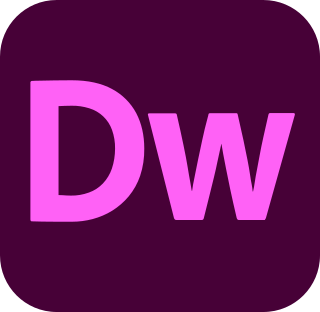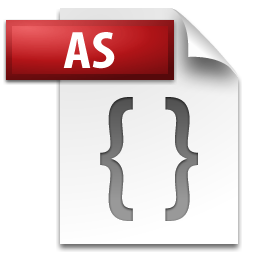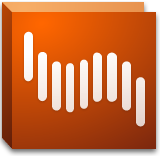
Adobe Flash is, except in China, a discontinued multimedia software platform used for production of animations, rich internet applications, desktop applications, mobile apps, mobile games, and embedded web browser video players.

Macromedia, Inc., was an American graphics, multimedia, and web development software company (1992–2005) headquartered in San Francisco, California, that made products such as Flash and Dreamweaver. It was purchased by its rival Adobe Systems on December 3, 2005.

Adobe GoLive was a WYSIWYG HTML editor and web site management application from Adobe Systems. It replaced Adobe PageMill as Adobe's primary HTML editor and was itself discontinued in favor of Dreamweaver. The last version of GoLive that Adobe released was GoLive 9.

Adobe Authorware was an elearning authoring tool with its own interpreted, flowchart-based, graphical programming language. Authorware was used for creating interactive elearning programs that could integrate a range of multimedia content, particularly electronic educational technology applications. The flowchart model differentiated Authorware from other authoring tools, such as Adobe Flash and Adobe Director, which rely on a visual stage, time-line and script structure.

Adobe Dreamweaver is a proprietary web development tool from Adobe Inc. It was created by Macromedia in 1997 and developed by them until Macromedia was acquired by Adobe Systems in 2005.

Adobe ColdFusion is a commercial rapid web-application development computing platform created by J. J. Allaire in 1995. ColdFusion was originally designed to make it easier to connect simple HTML pages to a database. By version 2 (1996) it had become a full platform that included an IDE in addition to a full scripting language.

In computing, a visual programming language or block coding is a programming language that lets users create programs by manipulating program elements graphically rather than by specifying them textually. A VPL allows programming with visual expressions, spatial arrangements of text and graphic symbols, used either as elements of syntax or secondary notation. For example, many VPLs are based on the idea of "boxes and arrows", where boxes or other screen objects are treated as entities, connected by arrows, lines or arcs which represent relations.

ActionScript is an object-oriented programming language originally developed by Macromedia Inc.. It is influenced by HyperTalk, the scripting language for HyperCard. It is now an implementation of ECMAScript, though it originally arose as a sibling, both being influenced by HyperTalk. ActionScript code is usually converted to byte-code format by a compiler.
SWF is a defunct Adobe Flash file format that was used for multimedia, vector graphics and ActionScript.
MXML is an XML-based user interface markup language first introduced by Macromedia in March 2004. Application developers use MXML in combination with ActionScript to develop rich web applications, with products such as Apache Flex.

Adobe Shockwave is a discontinued multimedia platform for building interactive multimedia applications and video games. Developers originate content using Adobe Director and publish it on the Internet. Such content could be viewed in a web browser on any computer with the Shockwave Player plug-in installed. MacroMind originated the technology; Macromedia acquired MacroMind and developed it further, releasing Shockwave Player in 1995. Adobe then acquired Shockwave with Macromedia in 2005. Shockwave supports raster graphics, basic vector graphics, 3D graphics, audio, and an embedded scripting language called Lingo.
ColdFusion Markup Language, more commonly known as CFML, is a scripting language for web development that runs on the Java virtual machine (JVM), the .NET framework, and Google App Engine. Several commercial and free and open-source software implementations of CFML engines are available, including Adobe ColdFusion, Lucee, New Atlanta BlueDragon, Railo, Open BlueDragon, and other CFML server engines.

Kaleida Labs formed in 1991 to produce the multimedia cross-platform Kaleida Media Player and the object oriented scripting language ScriptX that was used to program its behavior. The system was aimed at the production of interactive CD ROM titles, an area of major effort in the early 1990s. When the system was delivered in 1994, it had relatively high system requirements and memory footprint, and lacked a native PowerPC version on the Mac platform. Around the same time, rapid changes in the market, especially the expansion of the World Wide Web and the Java programming language, pushed the interactive CD market into a niche role. The Kaleida platform failed to gain significant traction and the company was closed in 1996.
A user interface markup language is a markup language that renders and describes graphical user interfaces and controls. Many of these markup languages are dialects of XML and are dependent upon a pre-existing scripting language engine, usually a JavaScript engine, for rendering of controls and extra scriptability.
MacroMind was an Apple Macintosh software company founded in Chicago in 1984 by Marc Canter, Jamie Fenton and Mark Stephen Pierce. The company's first product was SoundVision, a combined music and graphics editor. Before the release, the graphics editor was removed, and SoundVision became MusicWorks and the animation creativiy tool VideoWorks. Along with other early programs, MusicWorks and VideoWorks were originally published and distributed by Hayden Software.

Adobe Director was a multimedia application authoring platform created by Macromedia and managed by Adobe Systems until its discontinuation.

Adobe FreeHand is a discontinued computer application for creating two-dimensional vector graphics oriented primarily to professional illustration, desktop publishing and content creation for the Web. FreeHand was similar in scope, intended market, and functionality to Adobe Illustrator, CorelDRAW and Xara Designer Pro. Because of FreeHand's dedicated page layout and text control features, it also compares to Adobe InDesign and QuarkXPress. Professions using FreeHand include graphic design, illustration, cartography, fashion and textile design, product design, architects, scientific research, and multimedia production.

Object-oriented programming (OOP) is a programming paradigm based on the concept of objects, which can contain data and code: data in the form of fields, and code in the form of procedures. In OOP, computer programs are designed by making them out of objects that interact with one another.

Adobe Shockwave Player is a discontinued freeware software plug-in for viewing multimedia and video games created on the Adobe Shockwave platform in web pages. Content was developed with Adobe Director and published on the Internet. Such content could be viewed in a web browser on any computer with the Shockwave Player plug-in installed. It was first developed by Macromedia and released in 1995; it was later acquired by Adobe Systems in 2005.










